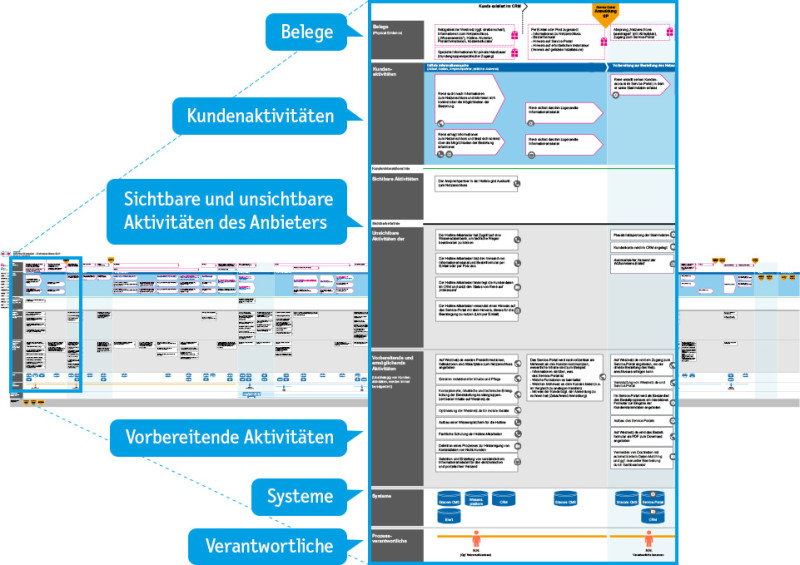Complexity as a challenge in Service Blueprinting

With the project task of harmonizing the customer interface – in particular, to increase customer friendliness – we supported one of the largest German network operators. To illustrate the Service Design concept, we applied Service Blueprinting and provided insights into the application of this method for depicting complex service processes in a corporate environment.
The overriding goal of the project was to provide an optimal and uniform service experience for the customers of a network operator, better unify the processes connected with the services, and to reduce administration costs – among other things, with a higher degree of digitalization.
Service Blueprinting is a well-known method for mapping service processes. Thus, it was also the method of choice to present the future service concept in the “Unified Customer Interface” project. The challenge was to be able to map out the scope and complexity of the service processes.
The service processes that had to be optimized were, among other things, the way to get a power connection as a customer of the grid operator, or to become an electricity supplier. The focus was on simplifying the future processes by intensifying digitalization. At the same time, it was necessary to increase transparency in the process for all parties, so that the customer is always aware of the processing status of their request.
On the way to the service concept, we have carried out numerous workshops with various stakeholders from the group environment. In further steps, we conducted interviews with representatives of the various customer groups and defined personas. With the creation of corresponding Customer Journey Maps, on the one hand the focus was on analyzing the actual situation and on the other the basis for developing a customer interface model using the SOLL concept was achieved.
The Blueprint Service was designed to map the entire service process. At the same time, several channels had to be presented with respect to alternatives in customer activities. For this the appropriate structure for the Blueprint had to be found. A takeaway was that it is not useful and also pretty difficult to map all eventualities and details. It was important to set the right focus. It was also important to understand Service Blueprints as working documents, which must always be adapted to the project’s requirements and its further steps.
The result showed magnitude: four, three-meter-long service blueprints were created for four different future service processes, were based on the relevant personas. To date they remain a basic artifact for realization of the unified customer interface as a multichannel service landscape.

Contact
14482 Potsdam
potsdam@d-labs.com
10245 Berlin
berlin@d-labs.com
70173 Stuttgart
stuttgart@d-labs.com
